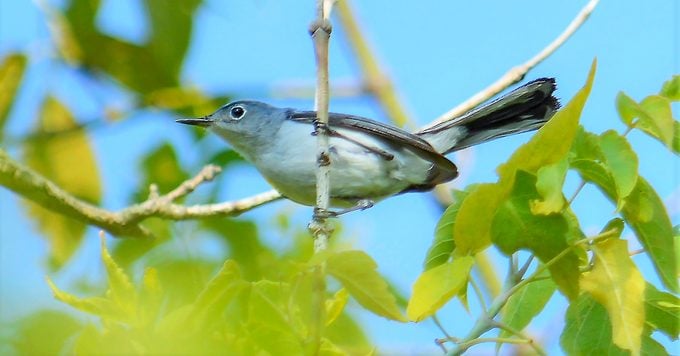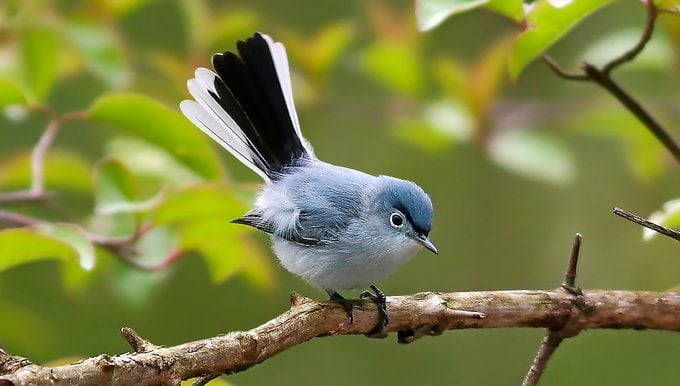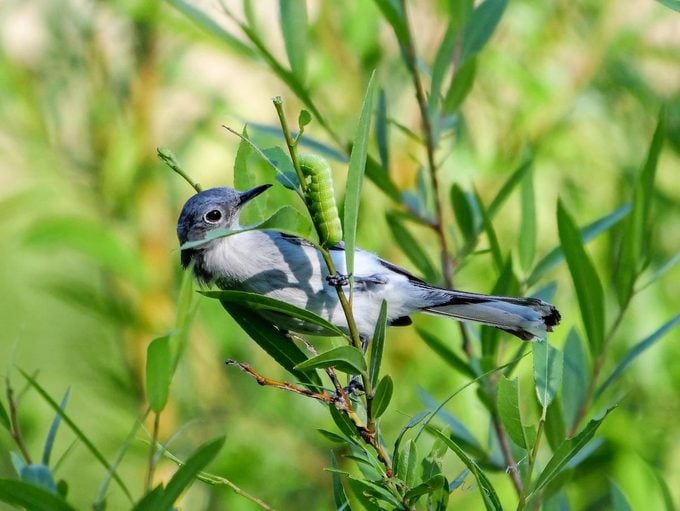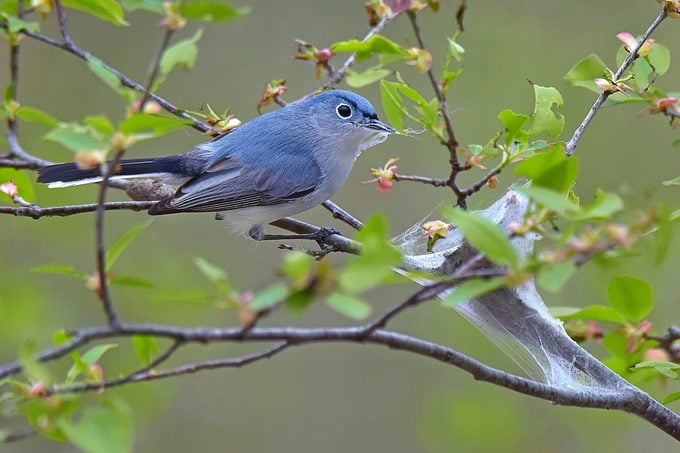How to Identify a Blue-Gray Gnatcatcher
Updated: May 13, 2024
See pictures of a blue gray gnatcatcher. Plus, find out where these small songbirds live, what they eat, and how they build nests.
Though often difficult to spot, the blue-gray gnatcatcher is a beautiful, quick-moving bird worth keeping an eye out for. Learn how to identify these small birds and where to find them.
See 20 photos of breathtaking blue colored birds.
On This Page
What Does a Blue Gray Gnatcatcher Look Like?

“What’s this bird?” asks Birds & Blooms reader Julie Konetzki of South Elgin, Illinois.
Birding experts Kenn and Kimberly Kaufman have the answer: “The most unusual thing about this bird is the fact that you took a good photo of it! This is a blue-gray gnatcatcher. It’s such a tiny, active sprite that’s usually flitting about among tree foliage, so it’s always a challenge for photographers. They are recognized by their small size, blue-gray back, white eye ring and long tail with white outer feathers.”
Meet the flycatcher birds flying under the radar.
Where Do Blue-Gray Gnatcatchers Live?

Kenn and Kimberly Kaufman point out that several members of the gnatcatcher group live in the Southwest. This is the only one found in eastern North America.
Blue-gray gnatcatchers are widespread in summer in the forests of the eastern U.S. and the Southwest, and they spend winter in the southernmost states and Mexico.
Debbie Parker of Sheffield Village, Ohio shared a photo (above) of a blue-gray gnatcatcher. “Springtime is exciting after a long, cold Ohio winter. Migrants are in their best colors, especially the males, and getting some nice shots is my goal. The blue-gray gnatcatcher is especially sought after. Getting a photo of one is challenging, so I was happy to capture this picture,” she says.
What does it mean when you see a bluebird?
What Do Blue-Gray Gnatcatchers Eat?

When it comes to their diets, it’s all about insects for the blue-gray gnatcatchers—their diet consists of everything from caterpillars to spiders and moths.
Mark Winterstein of Virginia Beach, Virginia, shared the above photo (above) he got of a blue-gray gnatcatcher potentially eyeing up a snack. He says, “When I was photographing hummingbirds at Stumpy Lake Natural Area, I managed to get a few frames of this blue-gray gnatcatcher with a caterpillar. I didn’t even know the caterpillar was there until I transferred the picture onto my home computer! I’m not sure whether it became a meal for the small bird, but it made for a good photo.”
Meet the cerulean warbler: sky blue beauty.
How Do Blue-Gray Gnatcatchers Make Nests?

Both male and female blue-gray gnatcatchers work together to construct a cup-like nest, which will typically hold three to five eggs.
“While hiking in a state park, my wife and I noticed this blue-gray gnatcatcher (above) stealing some caterpillar silk to construct its nest,” says Travis Bonovsky of Brooklyn Center, Minnesota. “Many small songbirds use silk, spiderwebs or animal hair to secure their nests. It was a unique moment to witness!”
Next, learn how to attract nesting birds to your backyard.




















